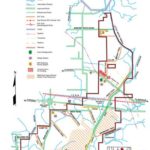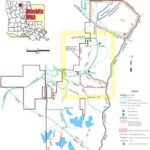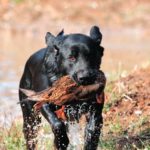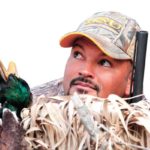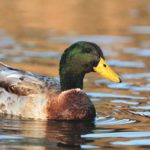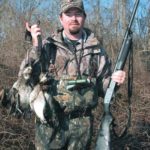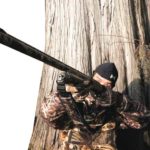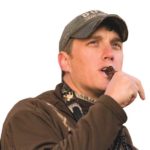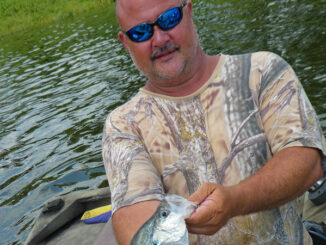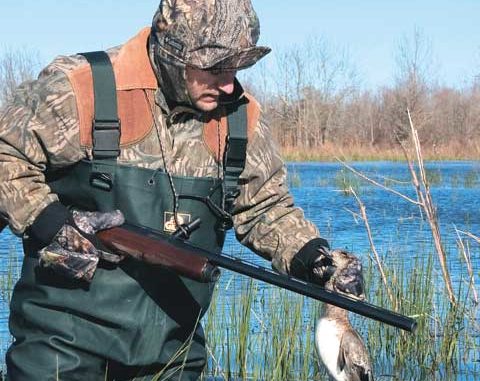
Put in some boot time, and you’ll fill a strap on these two WMAs.
I think I would have made a great colonist. Of course, I might not have liked actually being one back in the 1700s, but I think I could have at least held my own for a couple of days.
That pioneer spirit is scarcely found in the United States anymore. Rather than going out and killing, cleaning and preparing our meals, our dinner is conveniently served to us through a window complete with condiments that we didn’t brew, beverages we didn’t pour and all sorts of Styrofoam and plastic that we definitely didn’t make.
Seeing as how so much is done for us every day, I tend to rebel a little bit when people want to do things for me.
“No, thanks,” I politely say. “I can do it myself.”
Such was the case several years ago when it came to my initial attraction to duck hunting. My brother-in-law invited me to hunt some flooded farmland in Tensas Parish.
The hunt was great. I was ushered out to a cypress brake on a brand-new ATV. I didn’t even have to get my hands wet because the decoy spread was already perfectly bobbing in the rippling water. When it came time to call, I was informed that my calls would be better off hanging low on their lanyard rather than located near my lips.
I spent the next few years making casual hunts with my brother-in-law, but more often than not, I declined future invitations in favor of doing it myself. That meant I had to hunt public land near Monroe, which in turn meant I had to get up really early, hump in heavy bags of decoys and squat down in the bushes with strangers.
Limits were much more difficult to come by, though. In fact, I can only remember one day out of several that I actually brought home my six ducks. More often than not, there were only two or three birds on my strap, but I wouldn’t have had it any other way. They were the result of my efforts, and that made them so much sweeter.
A few years have passed since I last hunted the Russell Sage and Ouachita wildlife management areas near Monroe in Northeast Louisiana, but I will never forget the lessons they taught me as a beginning duck hunter.
And the great thing was that these public lessons didn’t cost anything more than the gas to get there. I didn’t need a boat, and I didn’t need a pit blind. All I needed was my feet because these are the two best walk-in duck hunting holes in the state.
Of course, things don’t always line up perfectly for Russell Sage and Ouachita WMAs to offer excellent duck hunting. While a few ducks can almost always be taken on them throughout the season, they are at the mercy of Mother Nature and mechanical equipment.
“Last year, we experienced major problems with our mechanical water-delivery system,” said LDWF Region 2 biologist Charles Booth. “As a result of these problems, water in the Russell Sage WMA west greentree area was almost non-existent.
“While doing engine/pump maintenance on both the north and south locations at Ouachita WMA, rotten pilings were discovered, and had to be replaced.”
As a result of the pump problems, both areas had very little water, which resulted in poor duck-hunting seasons at each WMA. However, things were already looking up for this duck season back in September as Hurricane Gustav dumped copious amounts of water on North Louisiana.
“Although it was earlier than we would have liked,” Booth said, “we did catch all that rain in the duck areas on both WMAs. So, unless we have a levee breech, we should be good for water on Russell Sage and Ouachita for the 2008-09 duck season.”
While both areas can produce some really good public-land duck hunting, each is an entirely different scenario. At Russell Sage, the primary focus is hunting mallards and wood ducks that make their way down through holes in the overhead canopy of two greentree waterfowl impoundments.
On the other hand, the primary focus at Ouachita is reservoirs that are located on reclaimed agricultural tracts. Rather than acres of flooded timber, Ouachita has acres of what would amount to flooded crop fields. In fact, being that the reservoirs are reclaimed farmland, they actually were part of farming operations prior to the purchase of the land.
“Most of the ‘farm’ has been reforested,” said Booth. “However, certain areas were left unplanted, and are now flooded annually for waterfowl.”
Other than the good duck hunting that both areas can offer at any time, the primary allure for many residents of North Louisiana is that Russell Sage and Ouachita have hunting areas that are within a short walk of the parking areas. What makes them so popular, though, is also what makes them crowded.
“Both areas are easily accessed,” Booth explained. “On Ouachita, you can practically drive a vehicle to the vicinity of where you want to hunt, and then it’s up to you how far you want to walk. The more you walk, the farther you get from the road and the parking areas.
“Russell Sage is accessed by parking at the parking area on Pump Road then traveling east on Pump Road to where you want to start your hunt. An additional waterfowl-hunting area is located on the Richland Parish side of Russell Sage south of I-20, and it is accessible by vehicles to a parking area at the end of the road. It is smaller than the west greentree reservoir, and it’s more difficult to hunt due to the thickness of its brushy understory.”
Like many things in life, what you get out of Russell Sage and Ouachita WMAs is largely dependent on what you put into it. As Booth mentioned, hunters may walk into both areas. They key is just how far you want to walk.
I can recall the last year I hunted Ouachita WMA before moving back to South Louisiana were some of the most productive days I ever spent hunting public land. Determined to find a spot that nobody else had found, my hunting buddy and I scouted for days, and we put a lot of miles on our boots.
What we discovered was a flooded field on the backside of the WMA that showed very little sign of human interaction while showing lots of signs of duck interaction. We knew it was going to be physically taxing to hump in all our gear on opening morning, but that’s exactly what we did.
“Being willing to walk will get you away from those hunters who want to hunt closer to their vehicles,” Booth said. “And under the best conditions, both areas should be good (this year). It’s basically a matter of whether you want to hunt timber or walk in to hunt flooded fields.”
We were willing to walk, and we had our limit of ducks before the sweat had even dried from our wool stocking caps. A mix of gadwall, teal, widgeon and mallards made our trip out much more difficult, but much more rewarding.

